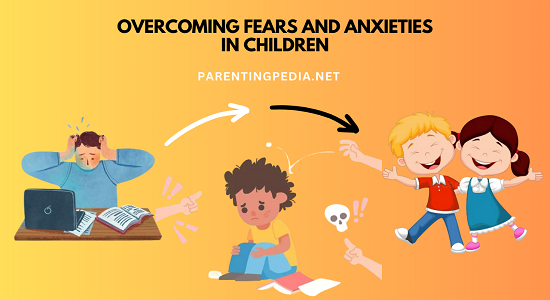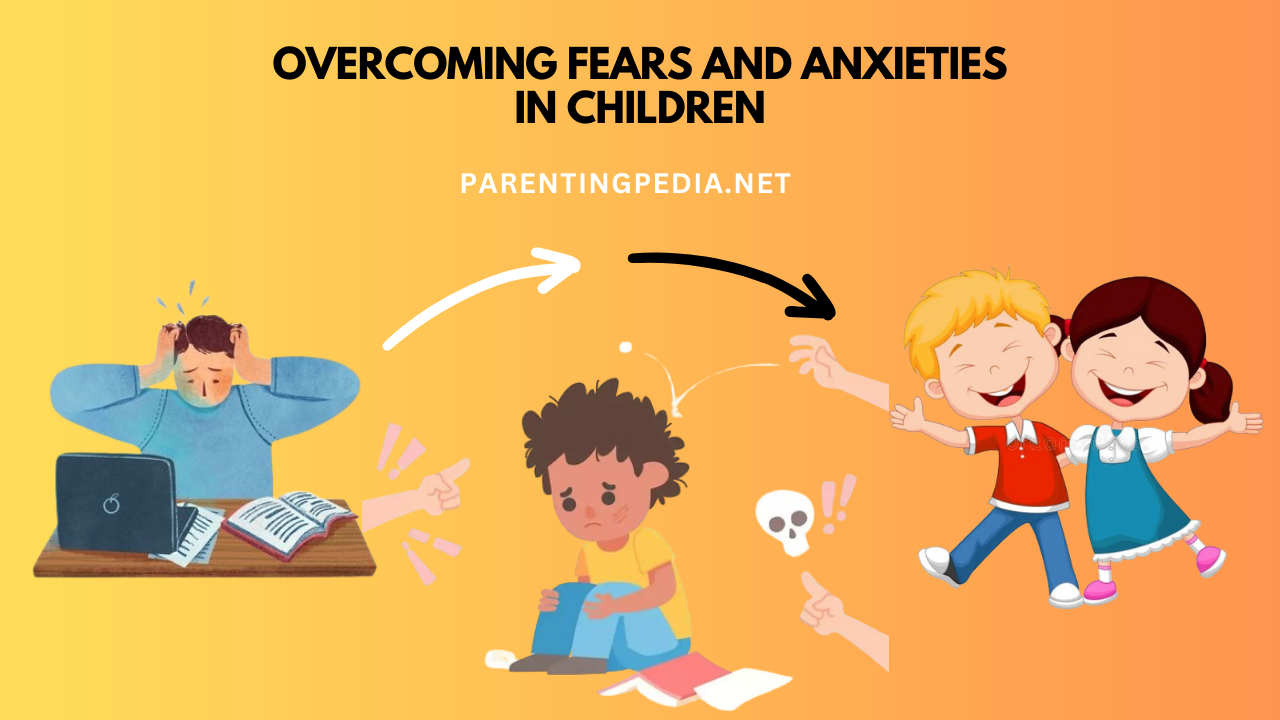Fears and anxieties are a natural part of childhood, as children face the complexities of the world around them. From fear of the dark to anxiety about school, these emotions are common and often temporary. However, when fears and anxieties become persistent or overwhelming, they can significantly impact a child’s development, affecting their emotional well-being, social interactions, and academic performance. Understanding the root causes of these fears and implementing effective strategies to address them is crucial for helping children build resilience and confidence. This article will explore the various types of childhood fears and anxieties, their potential impacts, and practical approaches for parents, educators, and caregivers to help children overcome these challenges.
Understanding Fears And Anxieties In Children
Children’s fears typically evolve as they grow, reflecting their developmental stages. Some common fears and anxieties include:
Fear of Animals: While many children have a natural curiosity about animals, others may develop a fear, particularly of animals that are large, loud, or move unpredictably. This fear in children can be triggered by negative experiences or by observing others fearful reactions against animals.
Fear of Failure and Rejection: As children grow older and enter school, they may develop fears related to academic performance and social acceptance. The fear of not meeting expectations, being rejected by peers, or making mistakes can lead to significant anxiety in children.
Phobias: Some children develop specific phobias, such as fear of heights, water, or certain objects or situations. Phobias are intense, irrational fears that can cause extreme anxiety and avoidance behaviors in children.
Separation Anxiety: This fear is most common in infants and toddlers but can persist into early childhood. It involves the fear of being away from parents or primary caregivers with whom child feels attached and has spent significant time with them.
Stranger Anxiety: Typically appearing between six and twelve months, this fear is a normal part of a child’s development. As children become more aware of their surroundings, they may develop anxiety around unfamiliar people.
Causes Of Fears And Anxieties In Children
Childhood fears and anxieties can arise from a variety of factors, including:
Developmental Factors: As children grow, their imagination, awareness of danger, and sense of independence increase, leading to fears like darkness, separation, and failure, which are natural parts of their psychological and emotional development.
Environmental Factors: A child’s environment plays a significant role in shaping their fears and anxieties. Exposure to stressful situations, such as parental conflict, divorce, or moving to a new home, can trigger anxiety. Similarly, hearing about scary events, such as natural disasters or accidents, can instill fear in children.
Learned Behavior: Children often learn fears from their parents or caregivers. If parents show anxiety about certain situations, a child may pick up on this and develop similar fears. Additionally, children may incorporate fears that are repeatedly expressed by adults, such as fears about safety or health.
Genetic Factors: Some children may be more prone to fears and anxieties due to genetic factors. A family history of anxiety disorders can increase the likelihood that a child will experience significant fears or anxieties.
The Impact Of Fears And Anxieties On Children
While fears and anxieties are normal and can even be protective in some situations, they can also have negative impacts if they become excessive or chronic. These impacts can be seen in various areas of a child’s life:
Emotional Impact: Children who experience high levels of fear or anxiety may struggle with managing emotions. They might become easily upset, irritable, or withdrawn. Over time, chronic anxiety can lead to more serious emotional issues, such as depression, particularly if the child is unable to manage his/her fears. This emotional distress can undermine overall happiness and well-being of children.
Social Impact: Fears and anxieties can significantly affect children’s social interactions. A child who is anxious about being separated from his/her parents may avoid social situations, leading to social isolation. Similarly, a child with a fear of rejection may struggle to make friends or participate in group activities, which can hinder the development of important social skills and lead to loneliness.
Also Read: Anxiety in Kids is Rising
Academic Impact: Anxiety can also interfere with a child’s academic performance. A child who is preoccupied with fears or worries may find it difficult to concentrate in class, complete assignments, or participate in discussions. Test anxiety, in particular, can impair a child’s ability to perform well, even if they are well-prepared. Over time, academic struggles can contribute to a cycle of fear and anxiety, further impacting the child’s confidence and motivation.
Physical Impact: Chronic anxiety can result in physical symptoms, such as headaches, stomach aches, fatigue, and sleep disturbances. These physical symptoms can further aggravate child’s anxiety, creating a cycle of stress that affects both their physical and mental health. In severe cases, anxiety can lead to conditions such as panic attacks, which can be frightening and overwhelming for a child.
Strategies For Overcoming Fears And Anxieties In Children
Helping children overcome their fears and anxieties requires a thoughtful, compassionate approach that help them to face their fears and develop coping skills. Here are several strategies to deal with fears and anxieties in children:
Open Communication: Encouraging open communication is the first step in helping a child overcome their fears. Children need to feel that they can express their fears and anxieties without judgment or dismissal. Parents and caregivers should create a safe and supportive environment where the child feels comfortable talking about their feelings.
Gradual Exposure: Gradual exposure to the feared object or situation can help children overcome their fears in a controlled and supportive way. Gradual exposure helps the child build confidence and reduces the fear response over time. For example, if a child is afraid of dogs, they might start by looking at pictures of dogs, then watching videos, and eventually meeting a calm, friendly dog in person.
Relaxation Techniques: Teaching children relaxation techniques can help them manage their anxiety in stressful situations. Techniques such as deep breathing, progressive muscle relaxation, and mindfulness can help calm the body’s physiological response to fear. Practicing these techniques regularly can help the child feel more in control of their anxiety.
Seeking Professional Help: In cases where a child’s fears or anxieties are severe or persistent, it may be necessary to seek professional help. Therapists, such as child psychologists or counselors, can provide specialized support and interventions. Therapy can provide a safe space for the child to explore their emotions and develop coping strategies.

Conclusion
Overcoming fears and anxieties is a vital part of a child’s development. While these emotions are a normal and natural aspect of growing up, they can become problematic if they interfere with a child’s growth and development. By understanding the root causes of childhood fears, and implementing effective strategies to address them, parents, educators, and caregivers can help children build the resilience and confidence they need to face their fears and navigate the world with greater ease. With the right support and guidance, children can learn to manage their fears, develop healthy coping mechanisms, and grow into emotionally strong and confident individuals.
FAQ
How to overcome fear and anxiety in children?
To help children overcome fear and anxiety, encourage open communication, validate their feelings, and gradually expose them to feared situations. Teach relaxation techniques like deep breathing, use positive reinforcement, and model calm behavior in front of them. Building resilience through supportive routines and promoting social connections will strengthen their ability to manage fear and anxiety.
What are the common fears and anxieties in childhood?
Common childhood fears and anxieties include fear of the dark, separation anxiety, fear of strangers, and fear of animals. As children grow, they may develop anxieties related to failure, rejection, or specific phobias like heights or water. These fears in children reflect developmental stages and the child’s growing awareness of their environment.
Remember, the greatest reward of parenting lies in watching
your children soar with love and confidence.
Till then keep smiling and be happy
🎉 Score Freebies by Completing Fun Offers – Start Now!

